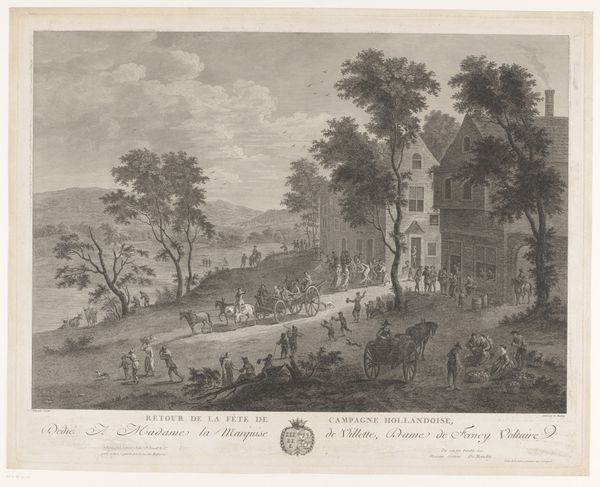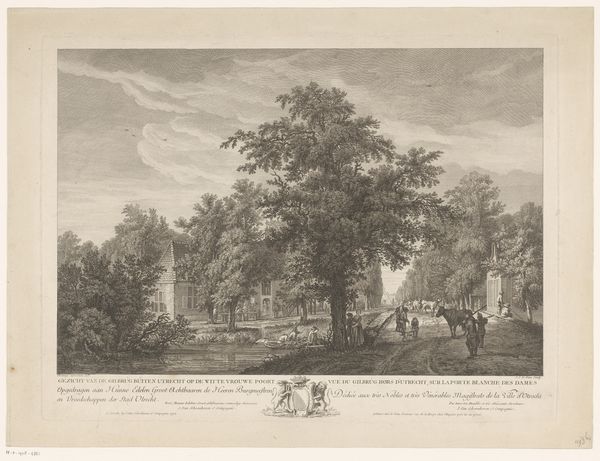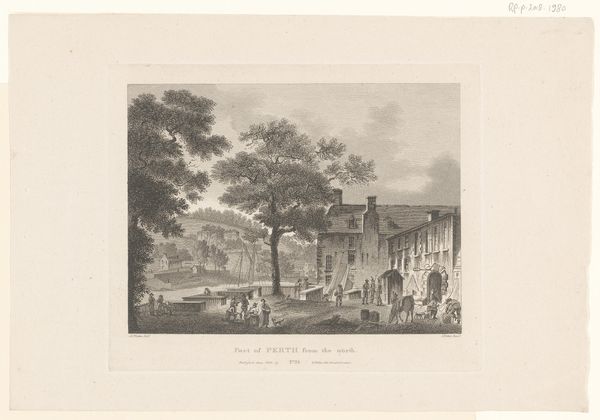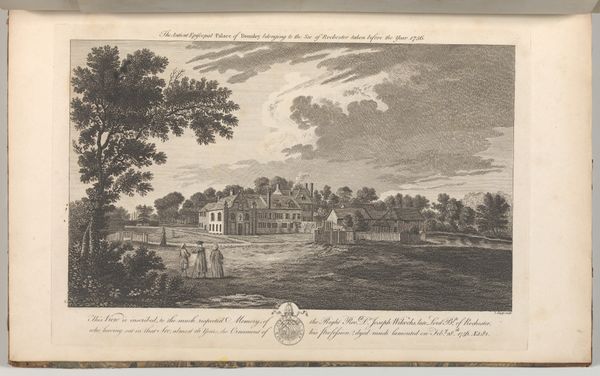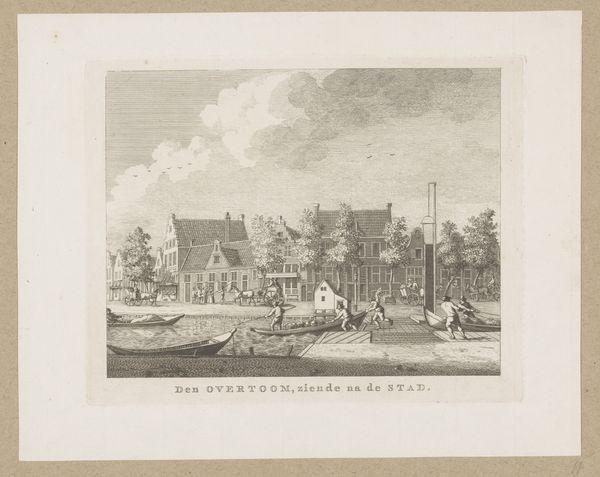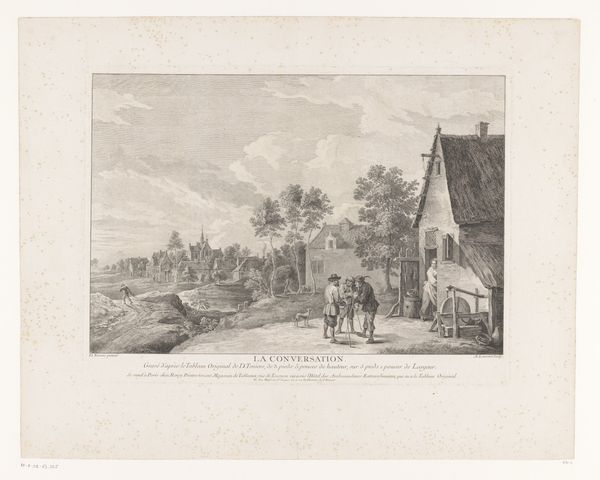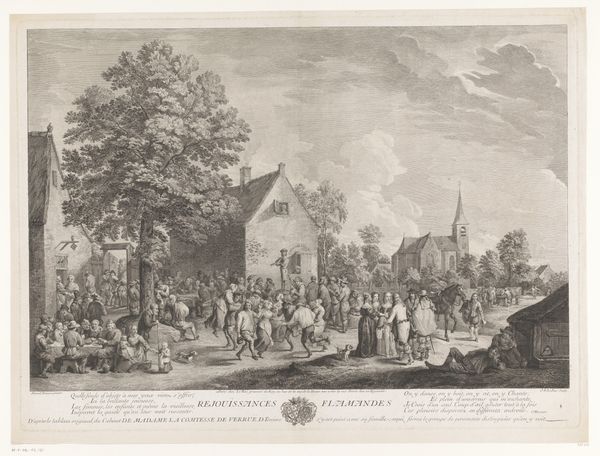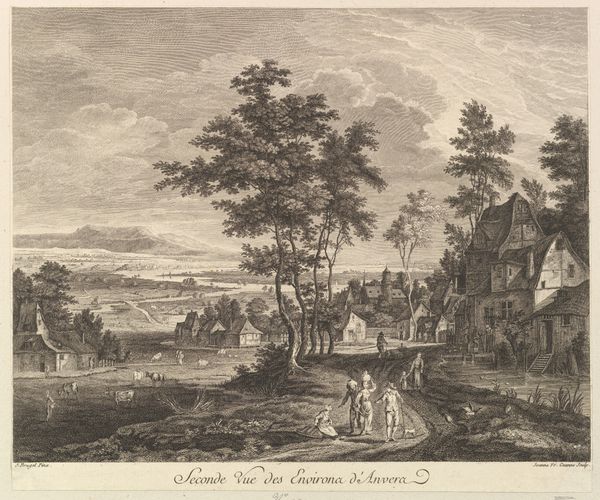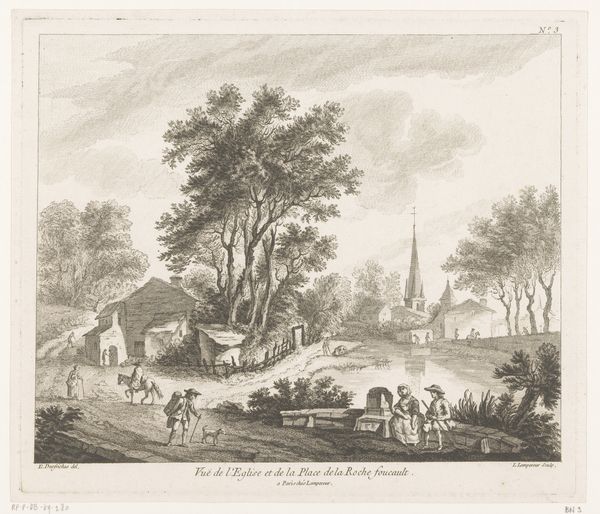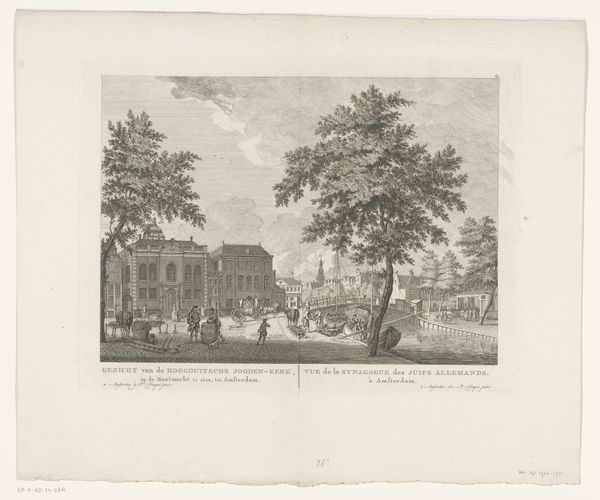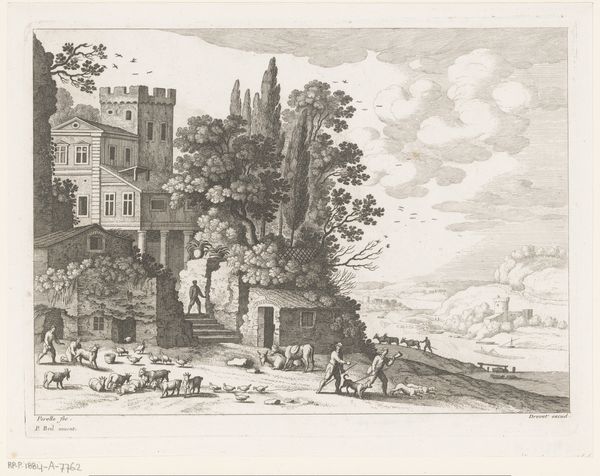
Dimensions: height 505 mm, width 639 mm
Copyright: Rijks Museum: Open Domain
Editor: So, here we have "Dorpsfeest," a 1777 engraving by François Nicolas Barthélémy Dequevauviller. It feels very... lively. Almost theatrical. The composition is intricate, depicting a village celebration, but what strikes me is the stark contrast of light and shadow. What do you make of it? Curator: It certainly possesses a performative energy. These scenes are not just recordings of events, they are consciously constructed to convey specific meanings, layered with symbolic significance. The revelry itself points to an ingrained need to celebrate transitions and community, doesn’t it? Note how hierarchy is visualized – the Baron set apart but still reliant on the community. Editor: You're right, there's a real emphasis on the Baron being separate but central. It’s almost like the celebration is *for* him. Are there any specific symbols you notice? Curator: Indeed! The very layout! See the imposing architecture flanking the lively disorder, one contained by the other. One almost *needs* the other, don't you agree? Furthermore, consider the clothing. It instantly transmits class and status, immediately impacting our perception. But do you think that this a specific event? Editor: Possibly! Or perhaps it's a generalized scene meant to evoke certain ideals or social norms? Curator: Precisely! Engravings such as these were intended to solidify specific moral structures, social relations, class expectations and memories. The details become incredibly significant – it invites us to reflect upon the continuities, even the fractures, in the perceived idyllic narrative they construct. Editor: That’s fascinating. It shifts the entire perspective! I never would have considered how actively these images are shaping societal expectations and behaviors. Curator: The intention *becomes* the meaning, doesn’t it? The cultural memory becomes real, tangible.
Comments
No comments
Be the first to comment and join the conversation on the ultimate creative platform.
